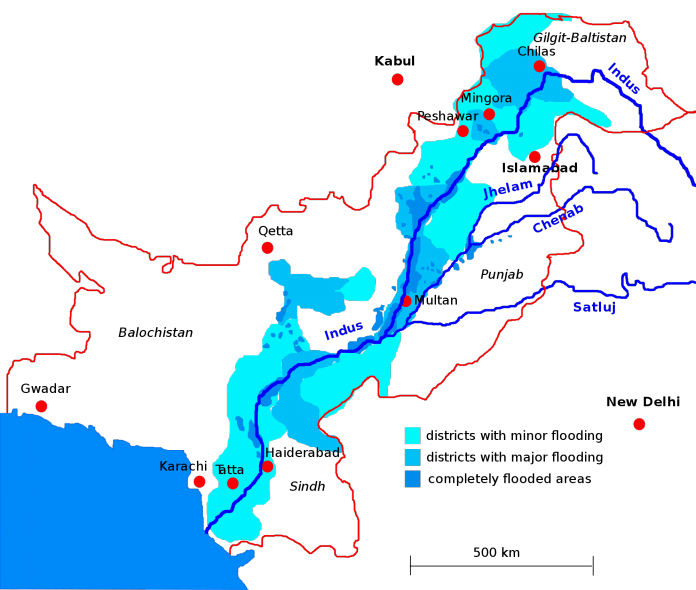After the division of the country British India to form modern day India and Pakistan there were many issues to be sort out like boundary, land and water. All these divisions had to be done in a peaceful and non-violent manner especially water bodies, which were used for sustenance, irrigation etc. and had to be divided in equal manner so that it is advantageous to both the parties.
So on 19th September, 1960 in Karachi the then PM of India Jawaharlal Nehru on behalf of India and the then Pakistan President Ayub Khan on behalf of Pakistan signed a water distribution treaty sponsored by the World Bank and this treaty is known as the Indus Water Treaty.
Division of the water
In the Indus Water Treaty the six rivers are divided into three eastern rivers and three western rivers. The three ‘eastern’ rivers are the Ravi, the Sutlej and the Beas, these rivers are given to India according to the treaty. The remaining three ‘western’ rivers are the Jhelum, the Chenab and the Indus which were given to Pakistan thereby dividing the water bodies among the nations in a manner that it does not give rise to future wars or problems of any kind.
Other Issue
After this division the more complicated and controversial issue on how the water are to be shared was also addressed. As India contained the Source Rivers of the Indus basin and if India used the water in larger quantity it may lead Pakistan to face droughts and famines. To resolve this issue guidelines are mapped out in the treaty like India using the water of the rivers for irrigation, power generation and transport as the rivers flowed through India before it reached Pakistan, but strict regulation were put for the use of this water for Indian building projects along the way. In short according to this Indus Water Treaty, India can use only 20 % of the Indus River’s total water therefore it feels like the rivers are being partitioned rather than shared.
Permanent Indus Commission
For the Indus Water Treaty to be followed smoothly without any disputes a special commission was created by the treaty known as the Permanent Indus Commission. In this commission each country appoints a commissioner and this commission has to follow a set procedure for deciding any future issues that may arise over the division of the water. For making co-operative arrangements to develop the Indus water basin and to resolve any future issues that may rise regarding the water division this commission has to meet up regularly. During the commission’s regular meet ups various data regarding any construction near the water bodies etc. is exchanged, discussed and agreed up on. Even after three wars this commission is going strong and has become a great medium for resolving any disputes or issues with simple exchange of data, inspection and visits thereby eliminating any reasons for conflict. If there is any case of conflict then it is resolved by a neutral expert that becomes a mediation of sorts between the nations.
World Bank involvement
For the division if the water bodies’ money was needed in order to build storage facilities, canals etc. and to fund for the whole treaty to be drawn and for the countries to meet up was sponsored by the World Bank. World Bank saw the progress of both the nations in this treaty.
Current Issue
After the tragic 2016 Uri attack this Indus Water Treaty has been scrutinized and a number of changes have been proposed by the Indian government. Another allegation regarding the validity of the treaty has also been filed in Supreme Court of India, it states that the treaty in not valid as it was signed by the PM of India who is not actually the head of the nation but the President of India is.
Only time will tell us how the Indus Water Treaty will be modified.











































